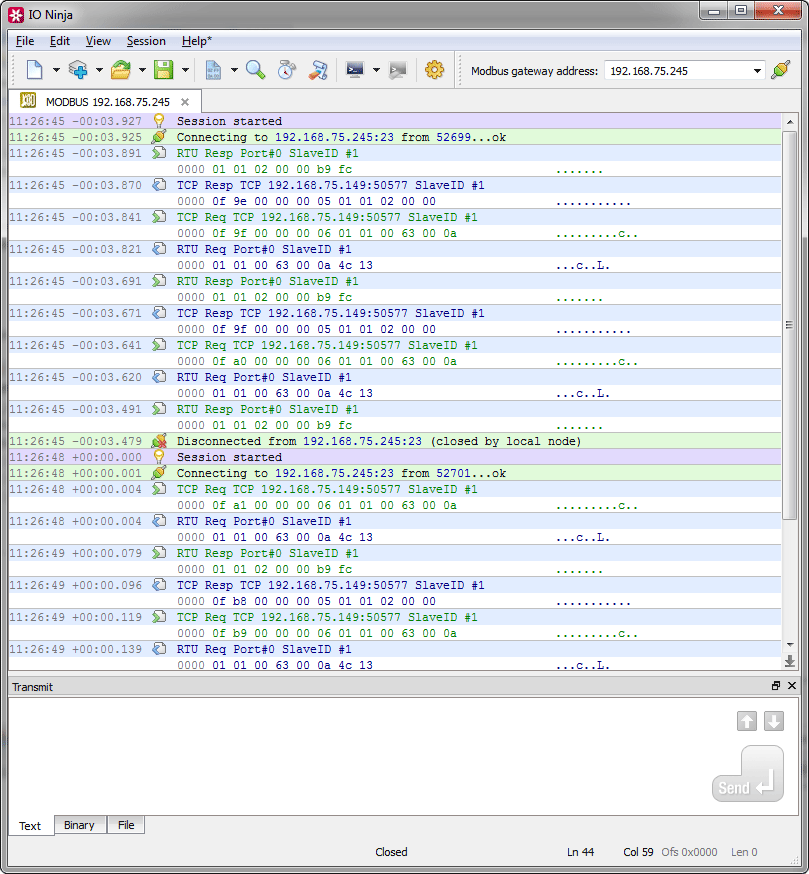Tibbo > Modbus Gateways
Tibbo Modbus Gateways

Tibbo Modbus Gateways route Modbus requests and replies between Modbus TCP, Modbus ASCII, and Modbus RTU masters and slaves.
Our Modbus Gateways comprise compatible Tibbo Project System (TPS) devices and
DS1101/DS1102 controllers running an open source
Modbus gateway application.
The flexibility and adaptability of Tibbo Modbus Gateways allow you to use them in practically any Modbus system.
Modbus Gateway App on DS1101/2 and WS1102

The DS1101 and DS1102 are programmable serial controllers that are ideally suited to work as Modbus Gateways.
Both models have an Ethernet port and differ in the type of their serial port.
The DS1101 has an RS232 port. Despite featuring a single DB9M connector and being priced as a single-port product, the DS1101 offers three RS232 channels.
Each serial channel can be used as an independent RS232 port with its own RX and TX lines,
which means that you can connect up to three RS232 Modbus devices to a single DS1101 unit.
The DS1102 has an RS232/422/485 port. Like the DS1101, it offers three RS232 channels in the RS232 mode.
In the RS485 mode, you can connect multiple RS485 Modbus slaves to a single DS1102 controller.
Both DS1101 and DS1102 are available with Wi-Fi, OLED display, and PoE options.
The WS1102 is a wireless programmable serial controller with native support for Transport Layer Security (TLS), making it an ideal Internet of Things (IoT) node for Modbus operations.
It features a universal RS232/422/485 port, as well as integrated Wi-Fi (802.11a/b/g/n over 2.4GHz/5GHz) and Bluetooth Low Energy (BLE) 4.2.
Tibbo Modbus Gateways — Features
- 100/10Mb Ethernet port.
- Optional Wi-Fi port:
- Support for WEP/WPA/WPA2 security;
- Automatic switchover to the Wi-Fi port whenever the Ethernet interface becomes inactive (the Ethernet cable is unplugged).
- Selection of static IP or IP configuration via DHCP.
- Serial ports:
- TPS2(G2)- and TPS3(G2)-based Gateways:
- Up to four RS232 or RS232/485 ports;
- Baudrates of up to 460,800bps;
- None*/even/odd/mark/space parity modes;
- 7* or 8 bits/character;
- Optional RTS/CTS flow control;
- DS1101- and DS1102-based Gateways:
- Up to three RS232 channels, or;
- One RS485 channel (DS1102 only);
- Baudrates of up to 921,600bps;
- None/even/odd/mark/space parity modes;
- 7 or 8 bits/character;
- Optional RTS/CTS flow control;
- Support for up to 8 TCP masters and up to 4 TCP slaves.
- Flexible routing:
- Routing of Modbus TCP, ASCII, and RTU requests in any direction:
- Modbus TCP —> Modbus RTU or ASCII;
- Modbus RTU or ASCII —> Modbus TCP;
- Modbus TCP —> Modbus TCP;
- Modbus RTU or ASCII —> Modbus RTU or ASCII.
- Slave ID-based routing (works for all types of Modbus Masters);
- TCP port-based routing (for Modbus TCP Masters only); four ports are available;
- Slave ID shifting.
- Support for Modbus exceptions:
- Timeout exception;
- Routing error exception.
- Configuration:
- Via the DS Manager utility;
- Via the web interface.
- Status indication:
- Using LEDs;
- On a display (when present).
- Operation monitoring:
- Gateway configuration can be monitored using SNMP protocol;
- Gateway activity and byte-level flow can be monitored using IO Ninja software running a specially designed plugin.
- 12V or 24V power; Optional PoE power.
- Open-source firmware (Tibbo C application).
* Second-generation TPS devices ("G2" devices) do not support the combination of the 7 bits/character mode and the "none" parity mode.











